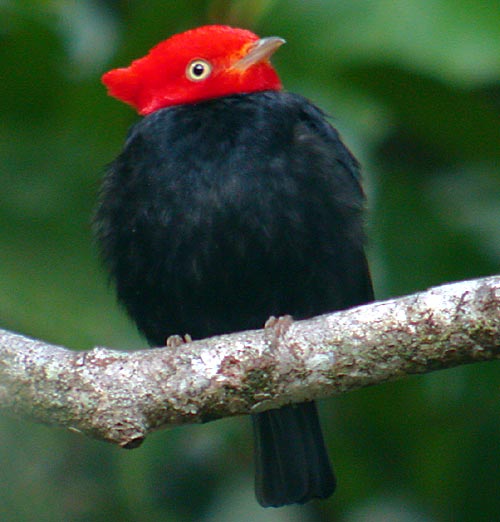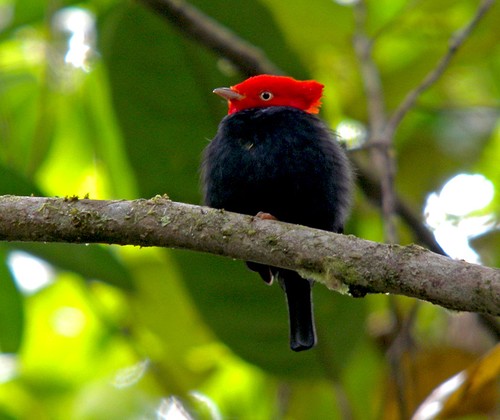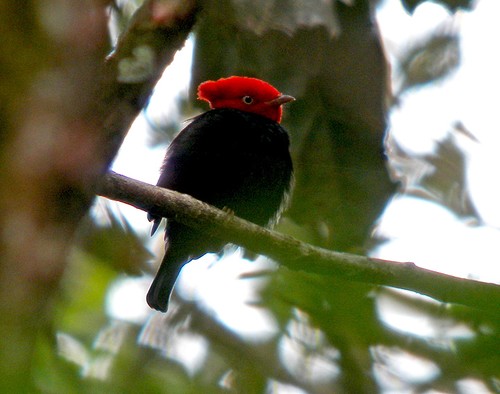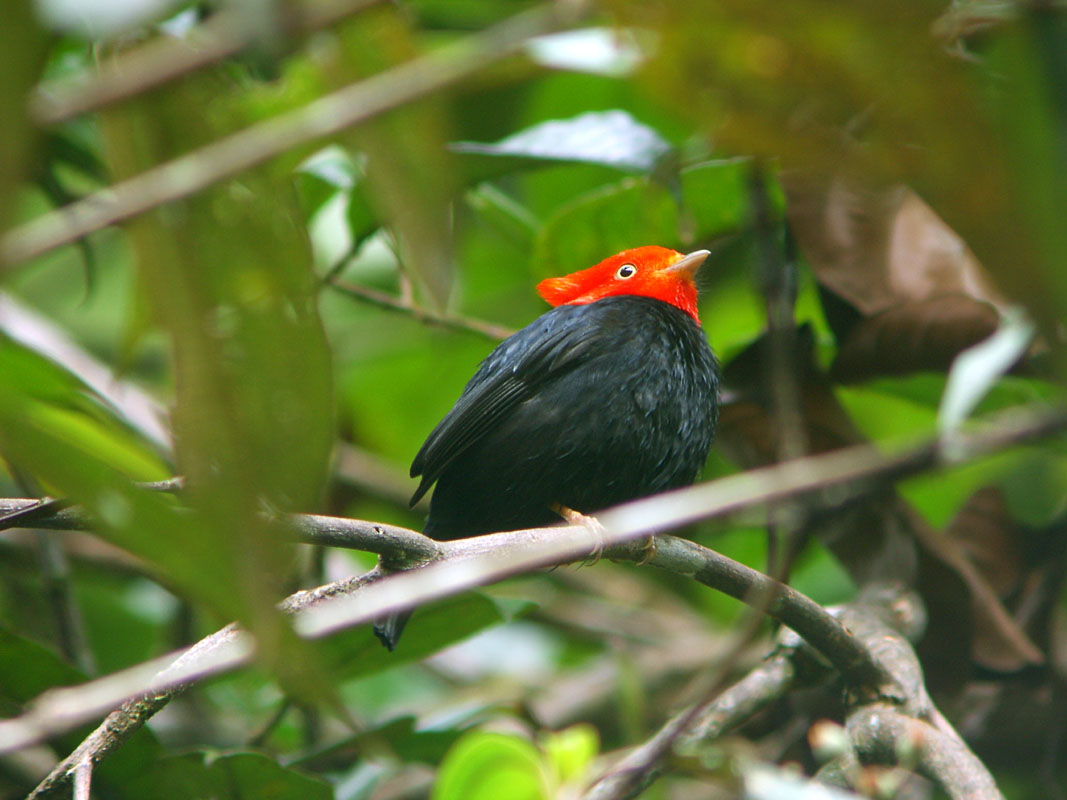
Pipra cornuta
SUBFAMILY
Piprinae
TAXONOMY
Pipra cornuta Spix, 1825, Brazil.
OTHER COMMON NAMES
French: Manakin а cornes rouges; German: Schopfpipra; Spanish:
Saltarнn Encopetado.
PHYSICAL CHARACTERISTICS
Sexes differ. Length is 4.6 in (11.7 cm). The male is mostly
glossy blue-black. The whole head is brilliant scarlet, including
a long bilobed crest on the hindcrown projecting back and
slightly upward; the thighs are scarlet. The female is dull olive.
Bills are pale flesh color in both sexes.
DISTRIBUTION
Venezuela (tepuis), Guyana, and possibly extreme north Brazil.
HABITAT
Low and middle understory of humid forest and mature secondary
woodland.
BEHAVIOR
Curious and confiding. Males display in traditional leks, vocalizing
as they fly between perches, and making some mechanical
whirring sounds with their wings.
FEEDING ECOLOGY AND DIET
Small fruits and insects are taken during quick, sallying flights.
REPRODUCTIVE BIOLOGY
Unknown.
CONSERVATION STATUS
Not threatened. Uncommon to locally fairly common in preferred
HABITAT
.
SIGNIFICANCE TO HUMANS
None known.
Photo Gallery of - Scarlet-horned manakin




 Animalia Life
Animalia Life